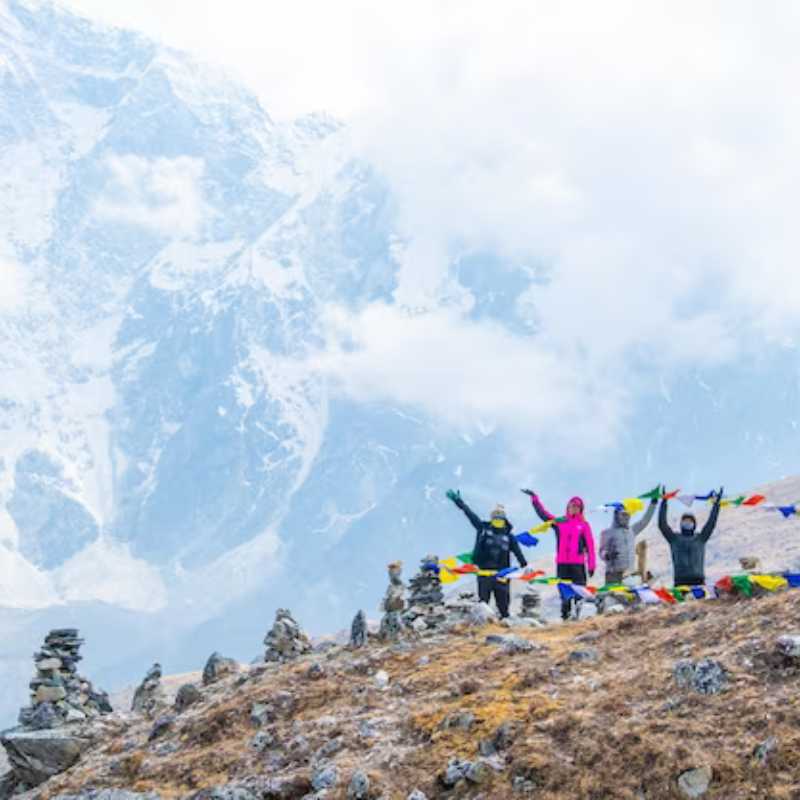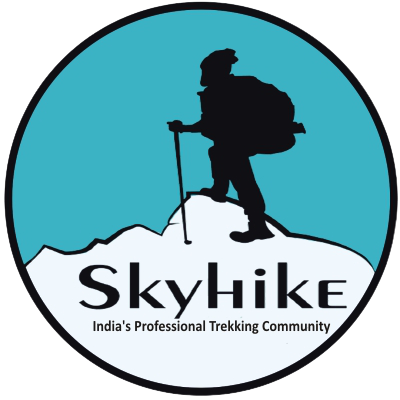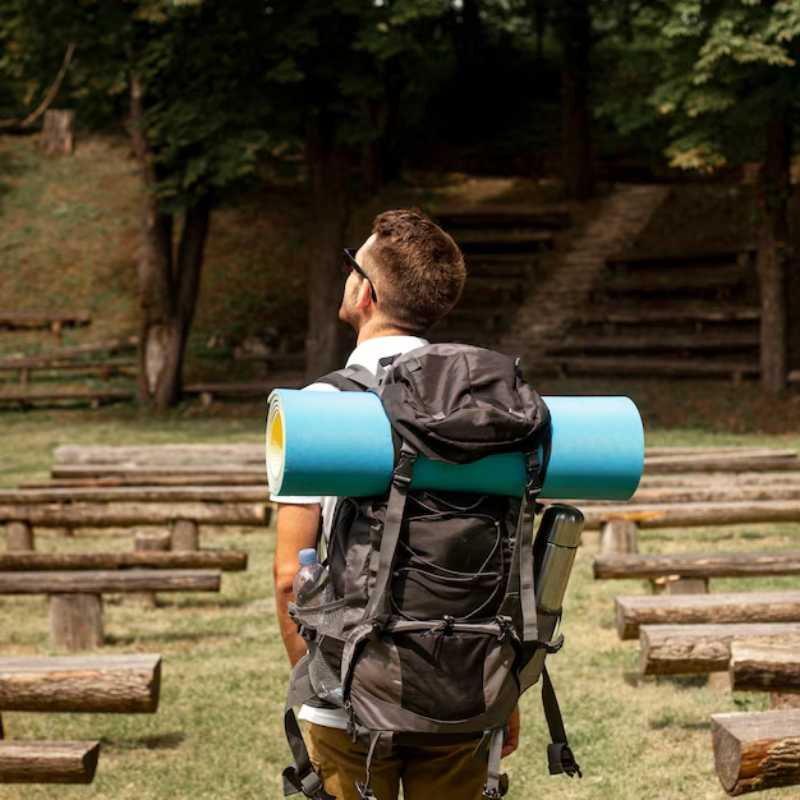At the point when you journey the Uttarakhand, you strip down to the basic necessities that you “really want” to remain agreeable and warm.
Thus, follow the rundown here. Try not to acquire additional items. You don’t require them.
The article closes with an occasional infographic for all the basics of a journey. Utilize these infographics as a source of perspective while pressing.

The Most Fundamentals: Things You Should Take on Uttarakhand Treks
1. Traveling Shoes
Any high elevation journey requires traveling shoes that are tough, have great hold, have lower leg support, and can deal with snow.

2. Rucksack
For a seven-day long high-height journey, all you want is a 50–60-liter knapsack. Ensure your rucksack has great hip help, shoulder backing, and fast access pockets.
3. Garments
On a high-height journey, the virus inconveniences you the most. Furthermore, wearing layers is the most effective way to handle the virus. Layers give you most extreme assurance and adaptability in the mountains. Also, when the weather conditions change in the mountains (as it happens like clockwork), you take off or put on layers as required.
a. Base Layer: 3 Shirts
Wear one shirt and convey two. Convey full sleeve dry-fit Shirts (ideally busted). Ensure one of them is marginally thick. On the off chance that you don’t get full-sleeve dry-fit shirts, you can choose to purchase full sleeves of other material.
What is significant is that you purchase full-sleeve shirts. These keep your arms and neck from getting burned by the sun. In the rarefied air on a trip, particularly at high heights, UV beams can consume you in a matter of moments.
Dry-fit shirts rapidly dry your perspiration, they are not difficult to wash, and in the event of a stormy day, they dry faster. Round neck Shirts are alright, however busted ones are better.
Remember the 3-4-5 mantra. 3 protection layers in summer, 4 in post-rainstorm, 5 in winter.
The quantity of warm layers you convey depends upon the season you’re going in. Assuming you’re going at any time:
From spring to September (summer), 3 layers
Among September and November (post-rainstorm), you will require 4 layers
What’s more, among December and Winter, you will require somewhere around 5 warm layers
b. External Coat
You really want sweaters and downy coats that are light and can overlay into reduced rolls.
For your external layer, a cushioned coat fills the gap here. You don’t actually require a water safe material. Yet, you really want an external, cushioned coat that keeps the breeze and cold out. Guarantee your cushioned coat has a hood, too.
c. Two-Trip Jeans
Two sets of trip jeans ought to do the trick for any Himalayan journey. Wear one set and convey one in the event of downpours. Journey pants with zippered shorts at the thighs are truly appropriate for journey. Additionally, pick fast dry jeans over cotton. They evaporate soon if there should be an occurrence of little stream intersections or downpours.
1. Shades
Shades are to forestall snow’s visual deficiency. On any Himalayan journey, particularly on the off chance that you’re going in a cold season, a little overexposure to guide daylight on snow can prompt snow visual impairment (even about a portion of hour’s openness). That is on the grounds that fallen snow is like a great many mirrors that reflect direct UV beams. So, you really want shades with UV security.
2. Sun Cap
A sun cap is required. Journeying without a sun cap can prompt migraines, sun strokes, speedy lack of hydration.
A sun cap keeps your internal heat level in balance. At night/early morning, the converse is valid. Your head loses your body heat rapidly. A woollen cap keeps heat from dispersing from your head. You feel warm and comfortable.
3. Manufactured hand gloves
Assuming that you are going whenever there is snow, you’ll require gloves to hold something or to consistent yourself in snow. You likewise believe that the gloves should keep you warm. Get engineered hand gloves that have waterproofing outwardly and a cushioned covering within.
In the event that you find the mix challenging to get (not likely), wear a tight-fitting downy hand glove inside an engineered hand glove. Hand gloves are required on any Himalayan trip.
4. Woollen Cap or Balaclava
Guarantee that these cover your ears. In the chilly mountains, you lose a great deal of intensity from your head. which is the reason you really want to keep your head secured, particularly when the sun is down. Early mornings or late nights. On a virus-traveling day, you might have to wear your woollen cap even while traveling. Spend days are known for this.
Your ears are touchy as well, so a woollen head cap that covers your ears is significant. A balaclava is a cutting-edge rendition of the woollen cap. It covers your ears, neck and portions of your face also. Try not to get a woollen cap that only covers your head (and not your ears).
5. Socks (3 sets)
Aside from two game socks, take a couple of woollen socks. Sports socks give you padding in addition to warmth. Again, the mantra is to wear engineered socks or, if nothing else, a manufactured mix. Cotton socks absorb water and sweat. They are extremely difficult to dry.
With respect to woollen socks, they assist you with keeping warm and cosy in the evening, particularly in your camping bed. On the off chance that you can’t get woollen socks, wearing two games socks fills the need too.
6. Headlamp
You want to get a headlamp since it leaves your hands free to do different exercises. On a long journey, you’ll require your hands to be allowed to wash dishes, set up shelters, and hold your trip posts.
7. Journeying posts (a couple)
Journeying posts give you dependability and equilibrium. They diminish your energy utilization by practically 40%. On any Himalayan journey, there are steep rises and plunges. A couple of journeying shafts will have the effect between an agreeable and a demanding trip. In India, we will more often than not utilize a single traveling post. Notwithstanding, two traveling shafts give you more prominent strength and equilibrium. They additionally increment your strolling pace.
8. Rainwear
On a journey, the weather conditions can change rapidly. A brilliant, bright day can transform into a deluge in no time. Convey a rain coat or a downpour coat to handle this. A raincoat is a major downpour cover with openings for your arms and your head. It is very compelling on the grounds that it covers both you and your knapsack. It is incredibly light and measures close to nothing.

9. Downpour Cover for Your Knapsack
Knapsacks are your life. You convey all your dry garments and warm stuff in your knapsack. It is vital that your rucksack stays dry consistently. Present day rucksacks typically accompany worked in downpour covers.
In the event that your knapsack doesn’t have a downpour cover, guarantee you get a downpour cover by either (a) purchasing a downpour cover or (b) slicing a huge plastic sheet to the size of your rucksack. You can move the plastic sheet around your knapsack and keep it set up with a string or flexible material.
10. Daypack (20-30 litres, discretionary)
A few travellers select to offload their sacks on donkeys or doormen on their trips. While we don’t support this training, on the off chance that you select offloading, then conveying a daypack is obligatory. A daypack is a scaled-down knapsack, only more modest in size.
In your daypack you convey basics like water bottles, rainwear, crisis medications, a headlamp, a few titbits, and a warm layer. Your primary rucksack that conveys a large portion of your gear is open just at the campgrounds.
A daypack is a more modest rucksack that is generally of a 20–30 litre limit. PC sacks are not daypacks. Try not to get them.
Other obligatory prerequisites:
1. A Makeup Bag
Keep your makeup bag light. Convey only the essentials — toothbrush, toothpaste, little cleanser, toilet paper roll, a little cream and lip ointment. You cannot have a shower on any journey, so don’t overburden yourself with cleansers and shampoos.
2. Cutlery
Convey a lunch box, a mug, and a spoon. Your lunch box should be airtight. You are supposed to wash your own cutlery. Try not to permit your cutlery to be washed by a traveling team.
At the point when you permit any other person to wash your cutlery, your cutlery turns out to be essential for a mass washing framework. They are normally not gotten along nicely. You promptly welcome microbes, microscopic organisms to choose your cutlery. The rate of stomach problems increases dramatically.
a. Two 1-liter containers or a 2-liter hydration pack: Practically all Himalayan journeys have numerous long stretches of traveling regular (roughly 6 hours). You want to convey two one-litre water containers to maintain yourself hydrated over the separation.
In the event that you are utilized to a hydration pack, that is alright as well. On the off chance that one among the two containers is a lightweight bottle, that assists you with putting away warm water on a truly cool day or for late nights and early mornings.
3. Plastic Covers
Convey 3-4 old plastic covers to keep your pre-owned garments. You could utilize them in any event for wet garments. Re-utilize old plastic packs for this and don’t buy new ones.
Individual Clinical Unit
Convey these drugs with you, effectively available consistently. Take no medication except if you have counselled your trip chief.
1. Diamox (1 Strip): Be on a course of a half tablet Diamox beginning from your home, like clockwork (125 mg). Carry on the prescription until you slip down to the headquarters from your journey. Being on a preventive course of Diamox extraordinarily diminishes the possibilities of Intense Mountain Disorder on a high-altitude journey.
2. Dolo 650 (5 tablets): This is a paracetamol. It assists with handling fever, a less overwhelming agony.
3. Avomine (4 tablets): Convey this particularly assuming that you are inclined to movement ailment. Pop one hour before the beginning of your street process.
4. Combiflam (5 tablets): Take a combi flam in the event that you get an unexpected touch on the leg or a muscle strain. It is a pain killer. It additionally contains paracetamol.
5. Digene (4 tablets): Take it assuming you feel the food that you’ve taken is undigested. Alert your Journey Chief right away. It very well may be an indication of AMS.
6. ORS (6 packs): Polish off a bunch of ORS water something like one time per day, typically late morning when you are in your journey. It recharges fundamental salts lost while traveling. Tip: It additionally makes cold water easier to drink.
7. Knee Support (discretionary): Convey this assuming you are inclined to knee injury or have known issues of knee torment.
Our Journey Chiefs convey a high height clinical pack with them, which likewise comprises life-saving medications. Assuming there is a crisis, our Journey Chiefs know how to handle it.
Assumption
Apart from this inclusive list, there is nothing more to bring on your next Uttarakhand Treks.
If you pack anything else apart from the necessities we have stated above, feel free to let us know in the comments section below. Also, share this expert guide with your friends who are preparing for their next Uttarakhand Treks.

